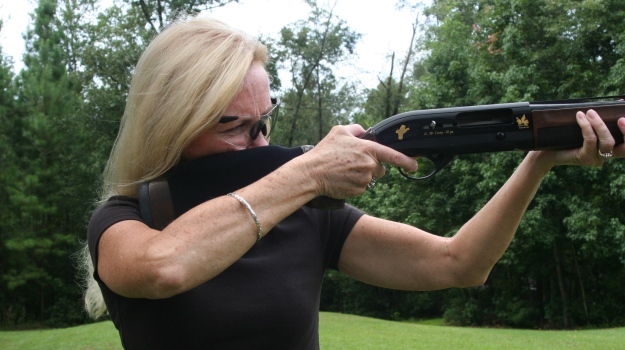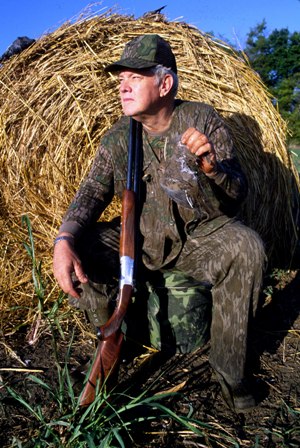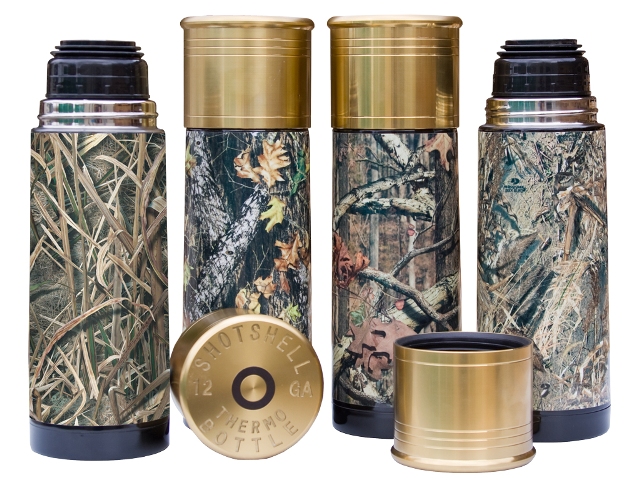
Marty Fischer
How to Pick Your Camouflage and Why
I have been on dove hunts where hunters show up in shorts, white socks and a white t-shirt, but I don’t go dove hunting without wearing a full suit of Mossy Oak camouflage. I want to make sure I blend in to my surroundings, rather than standing out like a sore thumb. I shouldn’t be moving, until I am ready to take the shot. However, if I do move before the shot, I want that movement to be disguised by the Mossy Oak camouflage dove hunting gear that I’m wearing. Remember, doves have very-good eyesight. When they spot something unnatural in the place where they feed, travel and/or water, they’ll veer away from that unnatural object. During the early season, I almost always will wear Mossy Oak Obsession, because there is a lot of green in the part of Georgia where I hunt. For early dove season in the South, I don’t believe there is a better pattern than Mossy Oak Obsession.
 If I’ll be hunting later in the season, hunting in a partially-cut corn field or hunting in an area where the foliage is really brown, I will wear Mossy Oak Break-Up Country. Another pattern that works extremely well when you’re hunting with a lot of dead grass and brown foliage is Mossy Oak Shadow Grass Blades, which we normally consider a waterfowl pattern. However, I have found it to be a productive late-season camouflage pattern for hunting doves. Often you may be hunting in tall grass around the edges of an agricultural field, and that’s where the Blade pattern will cause you to become invisible. Another pattern that works well around the edge of an agricultural field is Mossy Oak Duck Blind. I pick and chose my camouflage, once I know where I will be hunting.
If I’ll be hunting later in the season, hunting in a partially-cut corn field or hunting in an area where the foliage is really brown, I will wear Mossy Oak Break-Up Country. Another pattern that works extremely well when you’re hunting with a lot of dead grass and brown foliage is Mossy Oak Shadow Grass Blades, which we normally consider a waterfowl pattern. However, I have found it to be a productive late-season camouflage pattern for hunting doves. Often you may be hunting in tall grass around the edges of an agricultural field, and that’s where the Blade pattern will cause you to become invisible. Another pattern that works well around the edge of an agricultural field is Mossy Oak Duck Blind. I pick and chose my camouflage, once I know where I will be hunting.
How to Choose the Right Shotgun for a Lady or a Youngster
Most often, when a hunter is picking out a shotgun for a lady or for a youngster, he’ll purchase a .410 gauge shotgun. To be honest with you, the .410 is a gauge that only should be shot by experts in my opinion, because it has a very-long shot strain and a very-narrow pattern. If you purchase a .410 shotgun for a youngster or a lady, you have chosen a gun that gives them the least opportunity for success in a dove field or with any other form of wingshooting. But a .410 has very little recoil, which is the only advantage that a .410 has for a youngster or a lady. The .410 is so difficult to master. Even most veteran hunters can’t shoot a .410 with any degree of competency. So, I recommend a 20 gauge or a 28 gauge for the new shooter. Then I’ll have the new dove hunter shooting the lightest load he can buy. I recommend a 3/4-ounce load in a 20 or a 28 gauge shell. These guns are comfortable and soft shooting. Really and truly, the recoil is not that much more than the recoil from a .410.
Another difference is the weight of the gun. Most hunters will buy a single shot .410 for the new shooter. However, many gun makers today offer featherweight or lightweight 20 gauges and 28 gauges. Having said this, the biggest problem that I see with most 20 and 28 gauge shotguns is the comb (the top of the stock) is too low for most shooters to get a proper mount. If you watch a youngster or a lady, when he or she puts the stock to his shoulder, if the stock is not above the crown of the shoulder, his head will roll over the top of the stock pretty far. When the head rolls over the top of the stock, the shooter can’t look down the gun with his dominant eye. So, to sight properly, he must lift his cheek off the stock. When he lifts his head up, the recoil from the gun is magnified significantly, because the gun is not locked in to the cheek and to the shoulder.
There is a product – a Beartooth Stock Comb Raising Kit, which is a neoprene pad with a sleeve. You can use this kit to elevate the height of the comb of the shotgun, to enable the new shooter to keep his head erect like it’s supposed to be to shoot accurately. This Beartooth Comb Raising Kit is a magical piece of equipment that solves a major problem for new wingshooters like youngsters and ladies. I use this piece of equipment when I’m teaching wingshooting schools and realize that my new shooters are having difficult times getting the proper alignment for their cheeks, so that their eyes look straight down the barrel. If the shooter can look straight down the barrel and see the bead of the gun without moving his head, then the gun starts shooting where the person is looking, which makes shooting a shotgun accurately much easier.
Additional Tips:




























